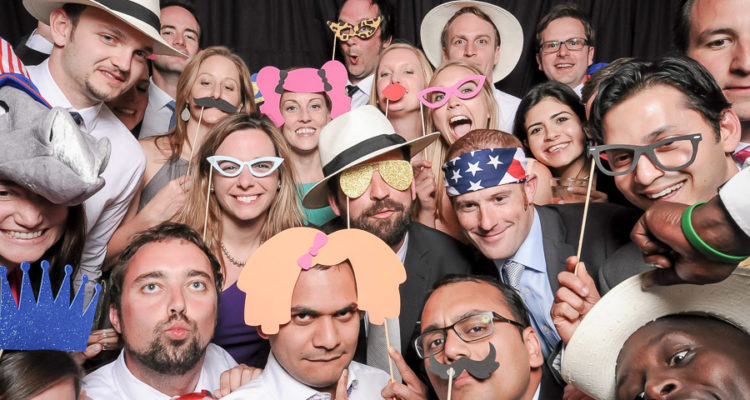Pixar is utterly brilliant. I never would have imagined a film about an old man taking his house to South America using balloons could send me on the emotional rollercoaster that it did—or that as a college student I would relate so well to Monsters University.
Here’s an idea: What if our youth committees could be to the church what Pixar is to movies? What if the ideas that emerge from council meetings were so brilliant that they inspired other areas of ministry within the church? After working with my youth committee for the past year, I have seen that the kind of collaboration that exists in the Pixar team can exist on a youth committee. I’m amazed that the team I work with could do the things it has done in the past year—that its members would craft such brilliant ideas to grow our ministry—but they did, and I learned how to get us there through Pixar’s methods.
Creating a Safe Culture
Pixar’s methods of collaboration are what lead to their brilliant ideas. They seek to create an environment where each team member feels safe sharing ideas, and other team members feel comfortable critiquing and building upon them. Pixar President Ed Catmull writes, “What we can do is construct an environment that nurtures trusting and respectful relationships and unleashes everyone’s creativity…the result is a vibrant community where talented people are loyal to one another and their collective work, everyone feels that they are part of something extraordinary.”1
The reason subpar ideas come out of youth committee meetings is that members are afraid to speak up about their thoughts. We want to stick with what is safe—what won’t be criticized. So how do you help a youth committee move past this fear and create a culture where ideas are freely shared?
Most of the time, it comes down to how the leader leads. The first thing I did when I met with my youth committee was establish the room as a safe place. I quoted the words of a former mentor: “If you have an awesome idea, but it requires a purple-polka-dotted elephant, tell us the idea. We’ll worry about how to get the elephant later.” This simple statement told them that nothing was too far out of the box. Getting people to share their ideas can be hard, but creating a safe environment is the first step. In our context, results did not happen overnight. Developing a culture takes time. I have been working with my youth committee for almost a year, and its members are just now coming to a place where they feel comfortable sharing new ideas. The best ideas my team creates never come from one person; they come from the entire team. Try to remind your team regularly that committee meetings are meant to be a place to share ideas. Encourage out-of-the-box thinking. Celebrate new and big ideas.
You Are Not Your Idea
We must remind our teams that when someone critiques or challenges an idea, he or she is not challenging the person who offered the idea. This past week, I asked my team, “How can we get high school students back into church?” We have a ton of middle school students in our program, but few high schoolers. I went into that meeting knowing that each member of the committee was going to have different ideas about how to complete the same goal. Before we opened the discussion, I told them not to be offended if another person in the room challenged their ideas. For us to have the truly great ideas that would help lead our program away from being event-based, we needed not to allow our emotions to interfere.
Ed Catmull sums up all this well in his book Creativity, Inc. “You are not your idea, and if you identify too closely with your ideas, you will take offense when they are challenged.”2 To have effective collaboration and idea building, we cannot attach ourselves too firmly to our own ideas. I often have been guilty of this. I think my idea is the best, and anyone else’s is subpar. As youth leaders, we must lead by example and not attach ourselves to our ideas. We must put them up for examination. For ideas to be truly great, they must be critiqued, challenged and built upon by the team.
When a committee stops seeing ideas as my idea or her idea, but instead as our idea, then the members can move forward in the process of collaboration. Work to build on the ideas of your committee members and allow them to build upon your ideas.
Evaluation Is Essential
When I had my first youth committee meeting, I set one goal: Evaluate the youth program. I had an interesting situation. For my first year of youth ministry, I didn’t know I had a youth committee. When I called our first meeting, I offered my own evaluation, and the members offered theirs. During our talk, we saw some places where the program needed improvement. Evaluation is now part of our culture. We want to make sure that what we are doing somehow fulfils our mission statement. Each event or Bible study we do somehow must bring students closer to each other and God. If there is an event or program that does not fulfil the criteria, we cut it so we can focus on other efforts. Churches tend to book events and plan their programs based on what they’ve always done. Part of collaboration is evaluating the old way of doing things to see if they’re still working. If it works, leave it; if it doesn’t, cut it and create something better.
A lot of people don’t know this, but Pixar’s Toy Story 2 was almost a flop. It had been storyboarded by a new team while the original Pixar team worked on A Bug’s Life. When the original team went to check on Toy Story 2, they saw that things were not good. When they evaluated the storyboard, they saw that the movie wasn’t meeting the standard they had set for themselves. The original team took on the project; from what could have been a disaster, they made something amazing. This seeped into Pixar’s culture. Constantly evaluating things allows for higher standards to be held. Pixar could have let Toy Story 2 flop, but it was part of their culture not to allow subpar movies to be produced.
Recently, we got together to think through the process of creating a Bible study specifically for high school students. I loved the idea. We worked out where it would meet and when; but as I was about to close the meeting, a committee member said that a high school Bible study wasn’t going to be enough—that we needed more. Initially, I was frustrated. I didn’t want to be challenged or listen to another idea. Then I remembered this is how the greatest ideas are crafted. I listened. They said we also needed some activities in which the high school students could be involved. As we fleshed out that idea, I saw that we had the makings of a high school student ministry program—something the church never had before.
The process of constant evaluation leads to new ideas. It allows the committee to see how things might be done better next time. It creates a culture that constantly improves upon itself. After each event, we look at what went well and what could be improved. This is a breeding ground for new ideas.
Risk It
People are not comfortable with risks. However, in collaboration, risk leads to awesome ideas. Pixar was unafraid to take risks. What could be more risky than a movie about a rat who wants to cook? Or a robot love story? These wild, out-of-the-box ideas are what lead to the movies we love. After walking on the uncertain ground of canceled events, the committee began to realize the best ideas are often the most dangerous.
A pastor friend once told me that the Japanese symbol for crisis is made up of two other words: risk and opportunity. Last year, my committee saw an interesting opportunity—one that had the chance of really growing the program, but it was risky. We wanted to start a contemporary youth worship service on Sunday nights. To understand why this was a risky move, you must know our church. We are a traditional church in terms of worship style. We were concerned about potential opposition, but we went forward with the idea anyway because we knew there was much to be gained. Ultimately, the worship service fizzled out, but it was not a failure. It opened up something new to the church. It showed that there are many ways to worship God. This idea helped form the youth committee into a team that’s willing to take risks. Lead your team down a road that risks much to gain much. Show the members that your goal is not to preserve the status quo but to reach students with the gospel.
Culture is built slowly and designed intentionally. It falls to the leader of the youth program to shape it in a way that glorifies God and leads to awesome ideas. The collaborative process of my youth committee still is developing; and I constantly remind myself that as the leader, it is my job to set the standards for the program and work to direct where it goes. However, it is not me who creates the culture—it is the team members with whom I work.
1 For full details on how Pixar saved Toy Story 2 see:
2 Catmull, Ed. Creativity, Inc. New York, New York: Random House, 2014. P. 94.




